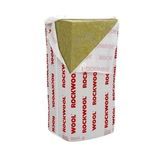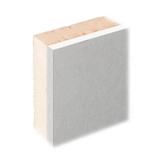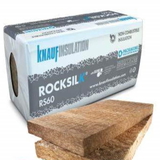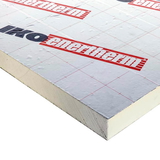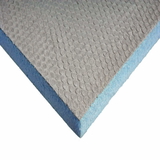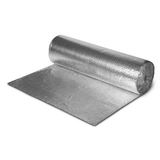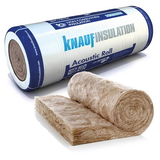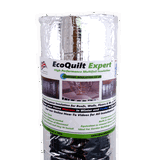- Blogs
- How to Install Thermal Insulation in the Right Order?
How to Install Thermal Insulation in the Right Order?

Thermal insulation is a great way to make your home more comfortable and energy-efficient. It reduces heat loss and gain, lowers your heating and cooling bills, and improves your indoor air quality. But did you know that the order in which you install thermal insulation matters a lot?
If you install thermal insulation in the wrong order, you could end up with thermal bridges, gaps, or air leaks that compromise the performance of your insulation. Thermal bridges are areas where heat can easily escape or enter through the building envelope, such as corners, joints, or studs. They reduce the overall R-value of your insulation, which is a measure of how well it resists heat flow.
To avoid thermal bridges and other issues, you need to follow the correct insulation installation order. In this article, we will explain the best practices for installing thermal insulation in different parts of your home, and what factors to consider when choosing the right type and thickness of insulation for your project.
Why You Should Install Thick Insulation First
One of the most important rules of insulation installation order is to install the thickest layer of insulation first, and then add thinner layers on top of it. This is because the thicker the insulation, the higher the R-value, and the more effective it is at preventing heat transfer.
By installing the thickest insulation first, you create a continuous layer of insulation that covers the entire surface of the wall, floor, or ceiling. This reduces the chances of creating thermal bridges or gaps that could allow heat to escape or enter. Then, by adding thinner layers of insulation on top of the thick layer, you increase the total R-value of your insulation system and enhance its thermal performance.
For example, if you are insulating a wall, you should start by installing rigid foam boards or spray foam insulation on the exterior side of the wall. These types of insulation are usually thicker and have higher R-values than other types of insulation, such as fibreglass batts or mineral wool rolls. They also create an airtight seal that prevents air infiltration and moisture accumulation. Then, you can add fiberglass batts or mineral wool rolls between the wall studs, and finish with drywall or plasterboard on the interior side of the wall.
By following this insulation installation order, you can achieve a high level of thermal insulation that will keep your home warm in winter and cool in summer.
How to Choose the Right Type and Thickness of Insulation
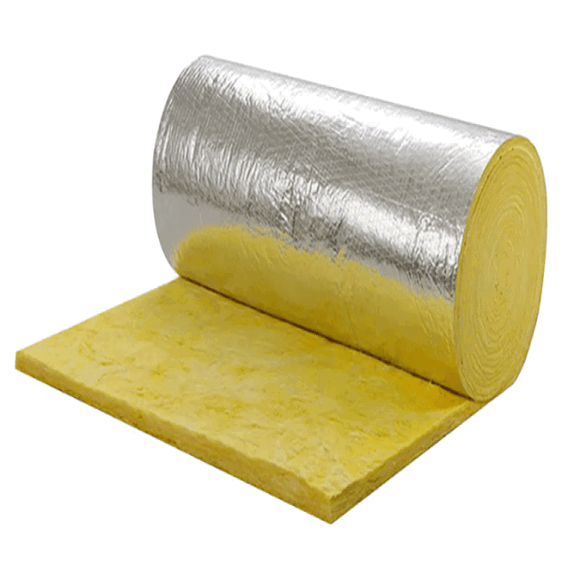 Another factor that affects the insulation installation order is the type and thickness of insulation you choose for your project. Different types of insulation have different properties, such as R-value, density, compressibility, fire resistance, sound absorption, and moisture resistance. You need to consider these properties when selecting the best insulation for your needs.
Another factor that affects the insulation installation order is the type and thickness of insulation you choose for your project. Different types of insulation have different properties, such as R-value, density, compressibility, fire resistance, sound absorption, and moisture resistance. You need to consider these properties when selecting the best insulation for your needs.
Some of the most common types of insulation are:
- Rigid foam boards: These are panels of polystyrene, polyisocyanurate, or polyurethane foam that are cut to fit the size and shape of the area to be insulated. They have high R-values, ranging from 4 to 8 per inch, and are ideal for insulating exterior walls, roofs, floors, and basements. They are also easy to install, as they can be glued, nailed, or screwed to the surface. However, they are more expensive and less flexible than other types of insulation and may require additional fire protection or vapour barriers.
- Spray foam insulation: This is a liquid foam that is sprayed onto the surface to be insulated, where it expands and hardens into a solid foam. It has very high R-values, ranging from 6 to 7 per inch, and creates an airtight and moisture-resistant seal that eliminates air leaks and thermal bridges. It is also very versatile, as it can fill any shape or size of cavity, and can be applied to any surface, such as walls, ceilings, floors, attics, and crawl spaces. However, it is also very expensive and requires professional installation, as it involves special equipment and safety precautions.
- Fiberglass batts: These are pre-cut sections of fibreglass wool that are fitted between the framing members of the area to be insulated, such as wall studs, floor joists, or roof rafters. They have moderate R-values, ranging from 2.9 to 4.3 per inch, and are relatively cheap and easy to install. They are also lightweight, flexible, and fire-resistant. However, they are prone to sagging, settling, or shifting over time, which can create gaps or air pockets that reduce their effectiveness. They also need to be installed carefully, as they can irritate the skin, eyes, and lungs and may require a vapour barrier to prevent moisture problems.
- Mineral Wool Insulation: These are similar to fibreglass batts, but are made of rock wool or slag wool, which are natural or recycled materials. They have slightly higher R-values, ranging from 3.1 to 4.2 per inch, and are more durable and resistant to moisture, mould, and pests than fibreglass. They are also more sound-absorbent and fire-resistant than fibreglass. However, they are also more expensive and heavier than fiberglass, and may also cause skin, eye, and lung irritation. They may also need a vapour barrier to prevent moisture problems.
The thickness of insulation you need depends on the climate zone you live in, the area of your home you are insulating, and the desired R-value you want to achieve. The higher the R-value, the better the insulation, but also the thicker and more expensive the insulation. You can use online calculators or consult with insulation professionals to determine the optimal thickness of insulation for your project.
How to Install Thermal Insulation in Different Parts of Your Home
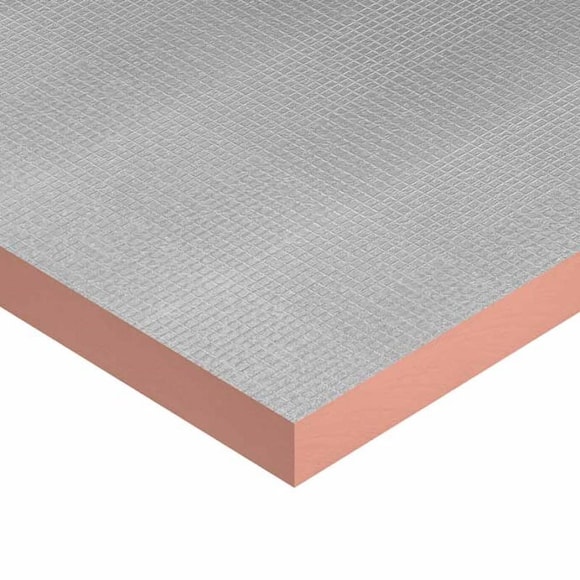 The insulation installation order may vary depending on the part of your home you are insulating, such as the walls, the roof, the floor, or the basement. Here are some general guidelines for installing thermal insulation in different parts of your home:
The insulation installation order may vary depending on the part of your home you are insulating, such as the walls, the roof, the floor, or the basement. Here are some general guidelines for installing thermal insulation in different parts of your home:
- Walls: The best way to insulate walls is to use a combination of rigid foam boards or spray foam insulation on the exterior side of the wall, and fiberglass batts or mineral wool rolls on the interior side of the wall. This creates a high-performance insulation system that blocks heat transfer, air infiltration, and moisture accumulation. You should start by installing rigid foam boards or spray foam insulation on the exterior side of the wall, making sure to cover the entire surface and seal any gaps or cracks. Then, you should install the fibreglass batts or mineral wool rolls between the wall studs, making sure to fit them snugly and avoid any compression or gaps. Finally, you should install the drywall or plasterboard on the interior side of the wall, and finish with paint or wallpaper.
- Roof: The best way to insulate roofs is to use a combination of rigid foam boards or spray foam insulation on the underside of the roof deck, and fibreglass batts or mineral wool rolls on the attic floor. This creates a high-performance insulation system that blocks heat transfer, air infiltration, and moisture accumulation. You should start by installing rigid foam boards or spray foam insulation on the underside of the roof deck, making sure to cover the entire surface and seal any gaps or cracks. Then, you should install the fibreglass batts or mineral wool rolls on the attic floor, making sure to fit them snugly and avoid any compression or gaps. Finally, you should install the ceiling on the lower side of the attic, and finish with paint or wallpaper.
- Floor: The best way to insulate floors is to use a combination of rigid foam boards or spray foam insulation on the underside of the floor, and fiberglass batts or mineral wool rolls on the upper side of the floor. This creates a high-performance insulation system that blocks heat transfer, air infiltration, and moisture accumulation. You should start by installing rigid foam boards or spray foam insulation on the underside of the floor, making sure to cover the entire surface and seal any gaps or cracks. Then, you should install the fibreglass batts or mineral wool rolls on the upper side of the floor, making sure to fit them snugly and avoid any compression or gaps. Finally, you should install the flooring on the top side of the floor, and finish with carpet, tile, or wood.
- Basement: The best way to insulate basements is to use a combination of rigid foam boards or spray foam insulation on the interior side of the basement walls, and fibreglass batts or mineral wool rolls on the basement ceiling. This creates a high-performance insulation system that blocks heat transfer, air infiltration, and moisture accumulation. You should start by installing rigid foam boards or spray foam insulation on the interior side of the basement walls, making sure to cover the entire surface and seal any gaps or cracks. Then, you should install the fibreglass or mineral wool rolls on the basement ceiling, making sure to fit them snugly and avoid any compression or gaps. Finally, you should install the drywall or plasterboard on the lower side of the basement ceiling, and finish with paint or wallpaper.
Frequently Asked Questions
Q: When installing insulation, how do you ensure proper placement between the joists or rafters?
A: Proper insulation placement between the joists or rafters can be ensured by carefully fitting the insulation material to cover the entire space without leaving any gaps. It is important to use the right insulation material and techniques to secure proper placement.
Q: Can I install insulation in the attic without insulating the external walls first?
A: It is recommended to insulate the external walls before the attic to ensure a comprehensive insulation system. Insulating the walls first helps in creating a continuous thermal barrier for the building, preventing potential thermal bridging and heat loss.
Q: Is it necessary to use a vapour barrier when installing external wall insulation?
A: Yes, using a vapour barrier in external wall insulation is important to prevent moisture from penetrating the walls and causing damage. It helps in maintaining the integrity of the insulation system and reducing the risk of condensation within the walls.
Q: What is the recommended method for installing batt insulation in external walls?
A: When installing batt insulation in external walls, it is important to ensure a snug fit with no gaps or compression. Carefully placing the batt insulation between the wall studs and using appropriate techniques can help in achieving effective insulation coverage.
Q: Why is it crucial to follow the specific order for installing thermal insulation in a building?
A: Following the specific order for installing thermal insulation ensures that the entire building envelope is properly sealed and insulated, addressing potential thermal weak points. This systematic approach maximizes the overall insulation performance and energy efficiency of the building.
Conclusion
Installing thermal insulation in the right order is essential for maximizing its effectiveness and efficiency. By following the best practices for insulation installation orders, you can create a comfortable and energy-efficient home that will save you money and reduce your environmental impact.
If you need any help with choosing or installing thermal insulation, you can contact us at Buy Insulation Online, where we offer a wide range of high-quality insulation products and services at affordable prices. We are happy to assist you with any insulation project, big or small. Visit our website Buy Insulation Online to learn more.

Samuel Hitch
Managing Director
Buy Insulation Online.
Leave A Reply
Your feedback is greatly appreciated, please comment on our content below. Your email address will not be published. Required fields are marked *
